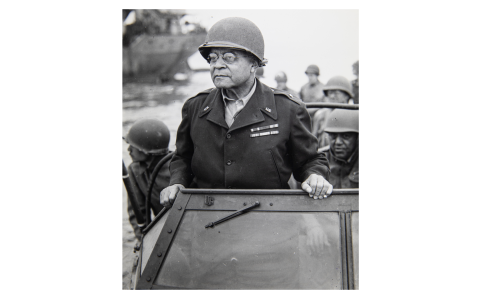The American Battle Monuments Commission (ABMC) welcomed its first African-American Commissioner, U.S. Army Brig. Gen. Benjamin O. Davis Sr., in July 1953, after he was appointed by then President Dwight D. Eisenhower. Davis fulfilled this role until June 1961.

Davis served from the Spanish-American War through World War II, when he was stationed in the European Theater of Operations and worked to expand the role of Black service members who were at the time still assigned to segregated units and facing racism. He was promoted to brigadier general in 1940, becoming the first African-American general in the U.S. Army.
On July 20, 1948, after 50 years of military service, Davis retired during a public ceremony presided over by President Harry S. Truman. On July 26, 1948, Truman issued Executive Order 9981, which abolished racial discrimination in the U.S. Armed Forces.
Davis’s son, Gen. Benjamin O. Davis Jr., who led the Tuskegee Airmen during World War II, went on to become the first African-American general officer of the U.S. Air Force in October 1954, and an ABMC commissioner under President Jimmy Carter between 1977 and 1981.
Through his achievements, Davis Sr. helped improve the lives and careers of all service members, with a special emphasis of promoting diversity amongst the armed forces and in leadership positions. He died on Nov. 26, 1970, in Chicago and is buried with his wife at Arlington National Cemetery.
The ABMC’s mission is to honor the service of the U.S. Armed Forces by creating and maintaining memorial sites, commemorating their service and sacrifice, and facilitating the education of their legacy to future generations. ABMC was founded in 1923 following World War I, and its 26 cemeteries and 31 monuments honor the service men and women who fought and perished during World War I, World War II, the Korean War and the Vietnam War, as well as some who fought during the Mexican-American War. Burials within all ABMC cemeteries are arranged without regard to rank, race or creed.
Sources: Historical Services, Abmc.gov, Digital Media, Benjamin O. Davis Sr. – Wikipedia, National Museum of the United States Army (thenmusa.org)
 An official website of the United States government. Here's how you know.
An official website of the United States government. Here's how you know. 